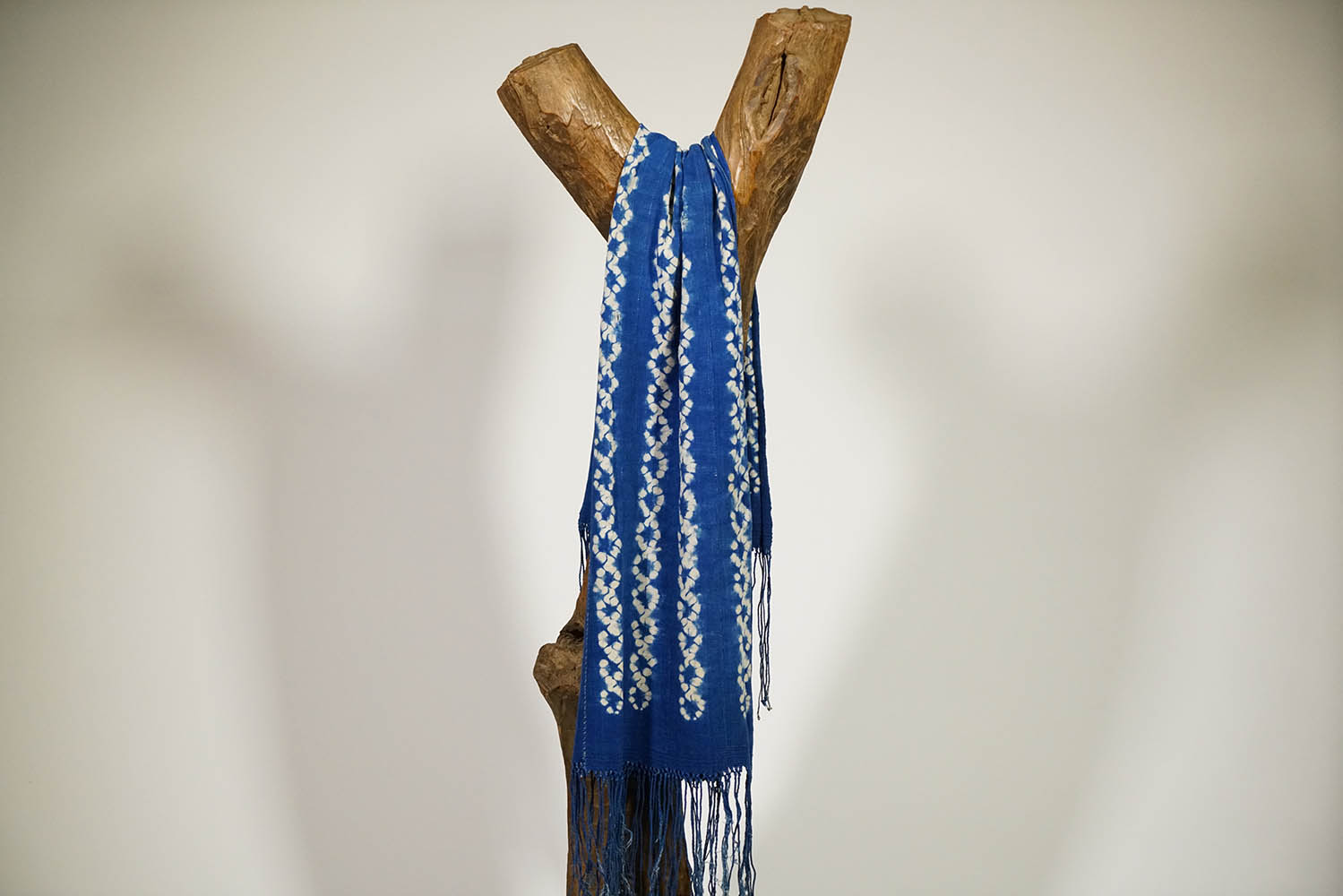This Mossi textile was created using a simple tie-dye method. The textile measures 72 inches tall and 21 inches wide. There are imperfections, fraying and possibly tears throughout. Please inspect photos.
| Type of Object | Textile |
|---|---|
| Country of Origin | Burkina Faso |
| Ethnicity | Mossi |
| Material | 100% Cotton Dyed Thread |
| Approximate Age | Unknown |
| Height (Inches) | 72” |
| Width (Inches) | 21” |
| Weight (Pounds) | 0.5 lbs |
| Overall Condition | Textiles may have tears and loose seams. Inspect photos carefully. |
You must be logged in to post a review.
Tribe Information
About the Mossi People
“The various tribes living in Burkina Faso (formerly Upper-Volta), Ghana and Togo cultivate millet and cotton, and rear cattle in the northern savannah regions. Their religious activities are dictated by the rhythm of the seasons – during the dry season in particular, when the fields are fallow, large festivals and ceremonies are organized.
The first Mossi empire was founded during the 15thcentury by invaders from northern Ghana. Today, the Mossi are the largest tribe living in Burkina Faso. They number 2,000,000 and are the only tribe discussed in this chapter who have a centralized governing body, in addition to clans and professional corporations led by elders known as Zaksoba.
Mossi sculptors are famous for their polychrome masks which are worn during funeral ceremonies and to guard crop. These masks – which have a totemic role – are stored carefully when not worn and are given libations in exchange for help in everyday Mossi life.”
Source:
Baquart, Jean-Baptiste. The Tribal Arts of Africa. New York: Thames and Hudson Inc. 1998. Print.
Additional Information
About African textiles
Originally used as a form of currency, woven African textiles have been very important throughout many African cultures. African textiles are often used to memorialize individuals and they often play a special role in traditional celebrations and ceremonies.





Reviews
There are no reviews yet.